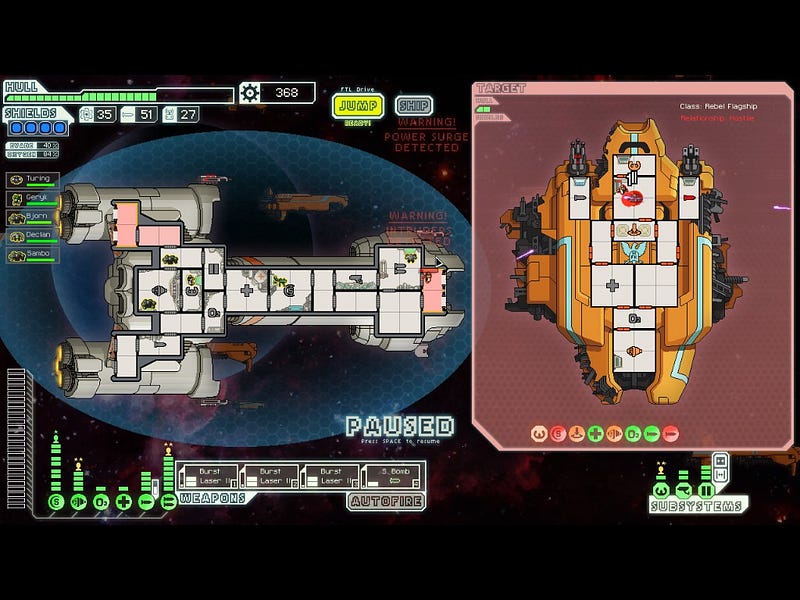Trending
Opinion: How will Project 2025 impact game developers?
The Heritage Foundation's manifesto for the possible next administration could do great harm to many, including large portions of the game development community.

Featured Blog | This community-written post highlights the best of what the game industry has to offer. Read more like it on the Game Developer Blogs or learn how to Submit Your Own Blog Post
For the final part of my look at replayability, we're going to talk about what Variance is, and how games have to be designed to be replayable.

For our final part looking at how replayability works in video games, it’s time to finally talk about what really creates a gamespace that is replayable.

Over the course of this series, we’ve talked about various concepts that designers use to try and make their game replayable. At the end of the day, whether its biomes, items, enemies, random generation, or procedural generation, the goal is to keep the game experience varied.
Once the player starts to feel like they’re just repeating the same things over, then the magic is lost. With the popularity of rogue-like and rogue-lite designs today, many game designers use the elements we’ve mentioned over this series to combat that.
However, when it comes down to true replayability, we need to define what really creates it.
Variance for our post will be defined by how many different and viable ways the game can be played. “Different and Viable” are important for the context of today’s post, and where lesser rogue-likes slip up.
In earlier talks about random and procedural design, I talked about micro and macro changes in the games. Micro changes impact the short-term play of a title, and macro affects the experience over the entire playthrough. A quick example would be how what can appear in a biome’s play-space would be micro, and the actual design and variables would be the macro.
The importance of defining variance by being different and viable is crucial to our talk. The problem with many titles that make use of randomized elements is that they don’t create a different way of play. This is especially true of the survival genre, and how it really is the least replayable of games built on random gamespaces.
The reason is that the player’s objectives are always the same no matter what, and so are the resources needed. It doesn’t matter how detail you generate a new area if the player is doing the same thing each time. This is also where the importance of biomes comes into play. Due to the biomes directly impacting what can appear, they will alter how the game is played.

Fixed Biomes or solutions will downplay variance
Going back to Spelunky for a second, while it is an amazing game and example of procedural generation, it doesn’t have a lot of variance. The only elements that change what the player will respond to are the biomes (cave, jungle, ice, temple, hell).
However, because the player does each one in the same order regardless of the playthrough, it’s not really creating a different play. The only exceptions are the events that can happen (spider invasion, UFO, darkness) that changes the state of the level.
Where viable comes in is with one of the basic tenets of games that generate content: The content must be beatable by the player on any given run. If the pool of winnable elements is too small, it creates situations where there are only a limited number of ways to actually beat the game. A big problem with FTL was that no matter how well the run played out, unless the player had the means to specifically counter the rebel ship at the end, they were going to lose.

Another point is games that use persistent systems to unlock the way to win over the course of multiple runs. We see this in games like Rogue Legacy or In Celebration of Violence, where the player had no way to win the game on their first set of runs, and had to level up to stand a chance.
Before we talk about how to actually create variance in your title, let’s briefly look at one of the best examples.
The Binding of Isaac is one of my favorite games and one of the best examples of variance. The key to Isaac’s replayability comes down to how many elements are shuffled throughout a given run. Playing the game, here are the elements that I know are fixed:
How to control Isaac
The Biome layers to expect
What room types could appear
Who are the end bosses
Now, here’s what the game shuffles up on each playthrough:
What rooms will be used
What enemies (and their variants) will fill the rooms
What items will appear
What Biome variants will be used
What regular bosses (and their variants) will be used
Will a curse modifier be applied
A typical BOI run can last between 30 minutes to an hour, but I know that no matter how many times I play it, I’m going to get a completely different experience.
Not only that, but due to how the game handles persistence, by unlocking new items and harder levels through play, I can technically beat BOI on the very first run. Granted, that first run will be tame compared to one several hours in, but it’s a great example of growing the design.
The key to creating variance is to do everything you can to reduce the number of set or fixed elements in your game. If the player always knows that X is going to happen, or that they will require item 1, in turn, that creates a repeatable pattern.
Games that are built on a high degree of variance keep the player guessing as to what they’re going to encounter and how to deal with it. From our talk on multiplayer, this is why playing against other human players provide variance compared to an AI with a fixed number of ways to play.
Even if your game does have a fixed endpoint, there is a lot you can do to keep the game from becoming routine. You could have alternate wins, different events that could show up, and more.
One of the most important parts about variance in design is the fact that people are going to be replaying your game. What that means is that the overall experience in terms of length should remain consistent, but what you want to add are more elements to make the play different. As we’ve talked about, look at games like XCOM2 or BOI as examples of supplemental content.
Variance by itself does not make a game good or bad, but it’s often a part of great game design. Just throwing in procedural or random events doesn’t mean that people will want to play your game over again if the path through remains the same.
To wrap up: Can you think of games that have done a good job of providing variance that we didn’t talk about?
Read more about:
Featured BlogsYou May Also Like